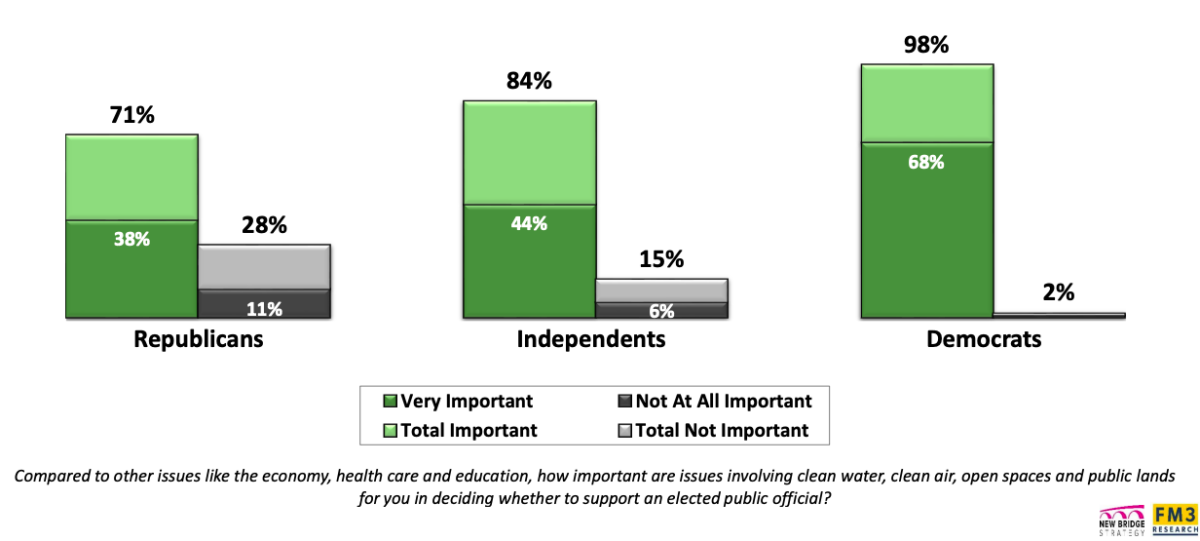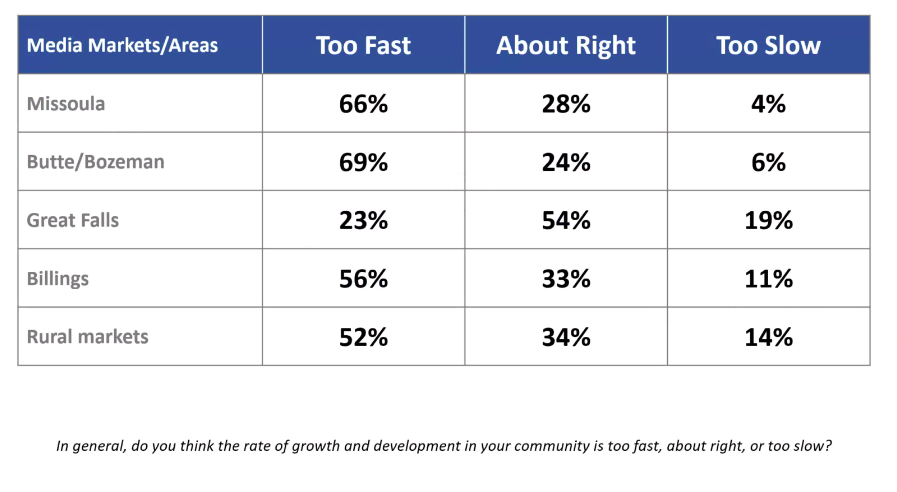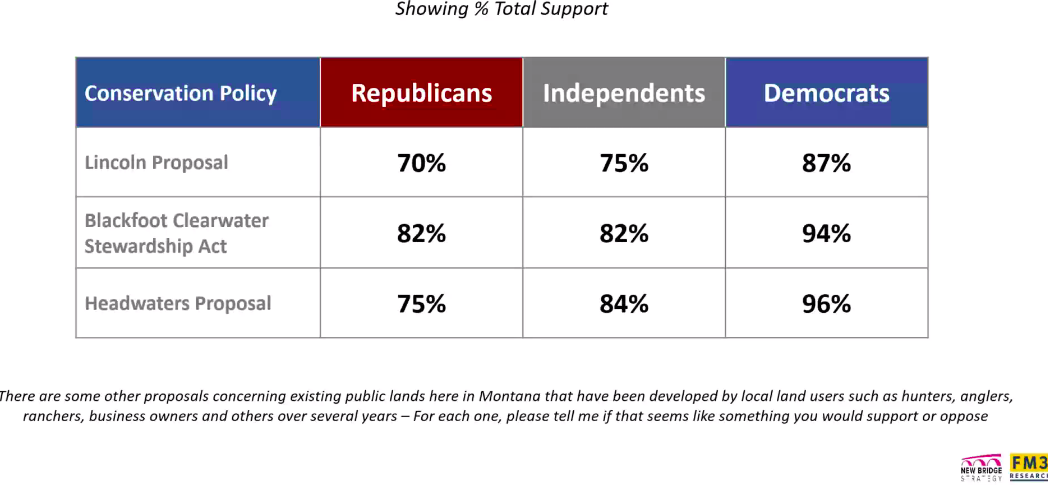
Survey: Montanans Indicate Decreasing Quality of Life, but Record Support for Public Lands Issues
Public lands poll shows high support for conservation issues even as residents aired grievances over the state's changing character
A record proportion of Montana residents report being concerned about their quality of life, new polling data shows, with 62% reporting it has gotten worse in the last five years and 84% describing the changing character of the state as a very serious problem.
That’s according to the 2024 Voter Survey on Public Lands commissioned by the University of Montana’s Crown of the Continent and Greater Yellowstone Initiative (COCGYI) and released on April 23. The biannual survey has tracked how residents think about public land and natural resource issues since 2014. The bipartisan survey was conducted by Republican pollster Lori Weigel of New Bridge Strategy and Democratic pollster Dave Metz of Fairbank, Maslin, Maullin, Metz & Associates.
Compared to 2022, there was a seven-point increase in poll respondents who said their quality of life has gotten worse over the last five years, with increased concerns over drought, development on ranch land and open spaces, low snowpack and overcrowding.
“We see a big jump this year in the number of Montanans who say they are concerned by development and the changing character of the state,” Weigel stated in an accompanying press release. “While the number of residents who say growth is happening too quickly has remained stable at 57%, residents are growing more concerned about the impacts of this growth in their communities.”
Weigel said during a press briefing that while the economy is usually top of mind during voter surveys, Montana voters in particular are united in their consideration of conservation issues as an important factor informing their political decisions.
Results from the poll revealed high support for conservation initiatives across Montana, with figures defying partisanship; for example, 71% of Republicans, 84% of Independents and 98% of Democrats indicated conservation issues helped determine their support for public officials.

“Montanans recognize and value our state’s natural beauty and heritage and strong bipartisan demand for conservation solutions continues to grow,” said COCGYI Director Rick Graetz. “Given the growing concerns over growth and development, it is time for more lawmakers to embrace conservation efforts that preserve some of Montana’s natural beauty and heritage and involve local communities.”

One poll question asking about growth and development in the community showed that more than half of Montanans in Missoula, Butte, Bozeman, Billings and rural areas feel the rate of change is too fast. Great Falls, however, proved an outlier, with 54% of respondents in the region saying the pace of growth was about right.
The pollsters, who also conduct the annual Conservation in the West poll, told reporters on a call Tuesday that the rates of public land visitation in Montana is higher than almost every other state in the nation, with just 5% of respondents saying they did not visit national public lands in the last year, compared to 11% in 2018.
“The prevalence of outdoor recreation, the use of national public lands, the familiarity with those lands — Montanans talk about national public lands the way voters in other states talk about their national parks,” Metz, the pollster, said.
Weigel added that Montanans not only expressed positive sentiment for public lands and conservation issues, but they tended to act on them at a higher rate than in other states.
“That walking the walk instead of talking the talk is definitely a Montana trait,” she said. “We’ve seen it demonstrated time and time again, even as people feel concerned, like changing how and where they recreate due to overcrowding. The overall attitude towards public lands is a uniquely Montana trait.”
Several specific initiatives were included in the survey, and all saw record numbers of support.
- 85% of voters support enacting the Blackfoot Clearwater Stewardship Act, which would add nearly 80,000 acres of existing public land to the Bob Marshall, Scapegoat and Mission Mountains wilderness areas; create two new recreation areas; and sustain timber harvest and habitat restoration.
- 76% support increasing protections on national forest lands near Lincoln by designating 55,000 acres of Wilderness near the headwaters of the Big Blackfoot River and excluding new mining and oil and gas development on 120,000 acres near the headwaters.
- 73% of voters support the U.S. Forest Service allowing public input on whether to allow new hardrock mining near the headwaters of the Smith River.

- A record 82% of voters say they support a president using the Antiquities Act to enact the highest protections for public lands.
- 70% support the Bureau of Land Management’s new rule giving land restoration and conservation the same level of consideration as uses like mining, oil and gas drilling, recreation, grazing and timber harvest.
The 2024 Public Lands Survey polled 500 registered voters by phone and online between March 23-28. The poll’s effective margin of error is ±4.38% at the 95% confidence interval. The full survey results and a summary presentation are available at the Crown of the Continent and Greater Yellowstone Initiative website.

